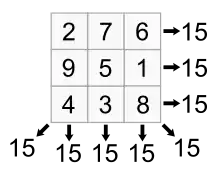Most-perfect magic square
A most-perfect magic square of doubly even order n = 4k is a pan-diagonal magic square containing the numbers 1 to n2 with three additional properties:
- Each 2×2 subsquare, including wrap-round, sums to s/k, where s = n(n2 + 1)/2 is the magic sum.
- All pairs of integers distant n/2 along any diagonal (major or broken) are complementary (i.e. they sum to n2 + 1).
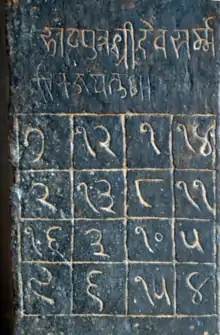 |
| |||||||||||||||||||||||||||||||||||
| Most-perfect magic square from the Parshvanath Jain temple in Khajuraho | ||||||||||||||||||||||||||||||||||||
Examples
Specific examples of most-perfect magic squares that begin with the 2015 date demonstrate how theory and computer science are able to define this group of magic squares. [1] Only 16 of the 64 2x2 cell blocks that sum to 130 are accented by the different colored fonts in the 8x8 example.
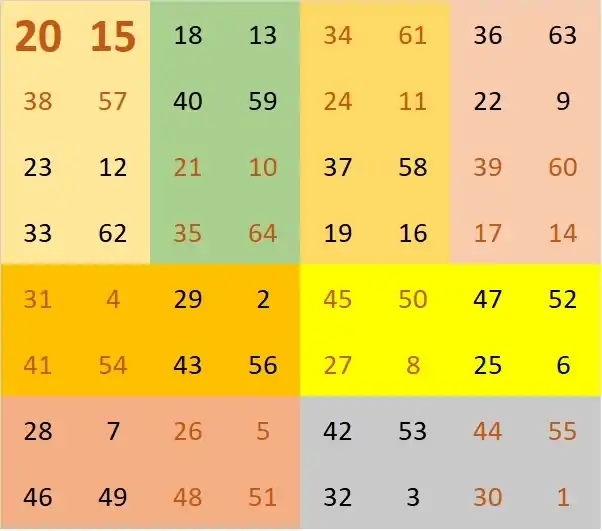
The 12x12 square below was found by making all the 42 principal reversible squares with ReversibleSquares, running Transform1 2All on all 42, making 23040 of each, (of the 23040 x 23040 total each), then making the most-perfect squares from these with ReversibleMost-Perfect. These squares were then scanned for squares with 20,15 in the proper cells for any of the 8 rotations. The 2015 squares all originated with principal reversible square number #31. This square has values that sum to 35 on opposite sides of the vertical midline in the first two rows.[2]
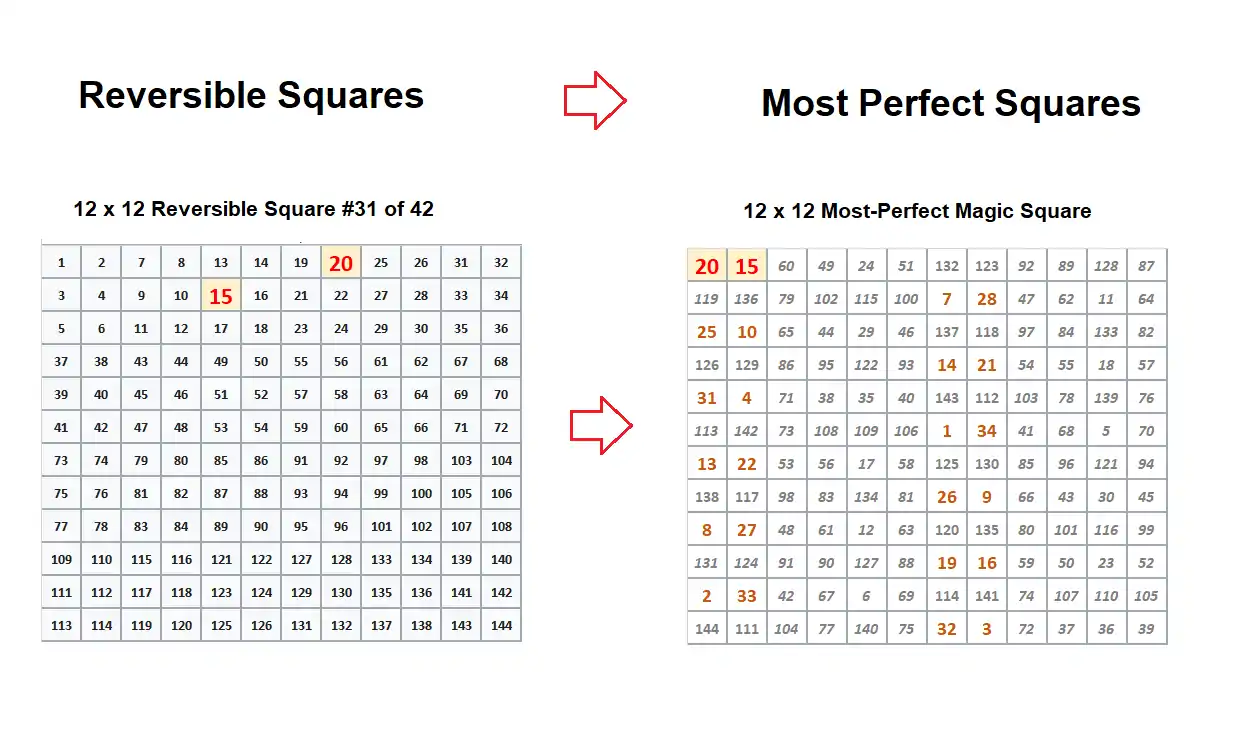
The 2021 update below shows how the 2x2 cell block sums are preserved in a row / col translation.
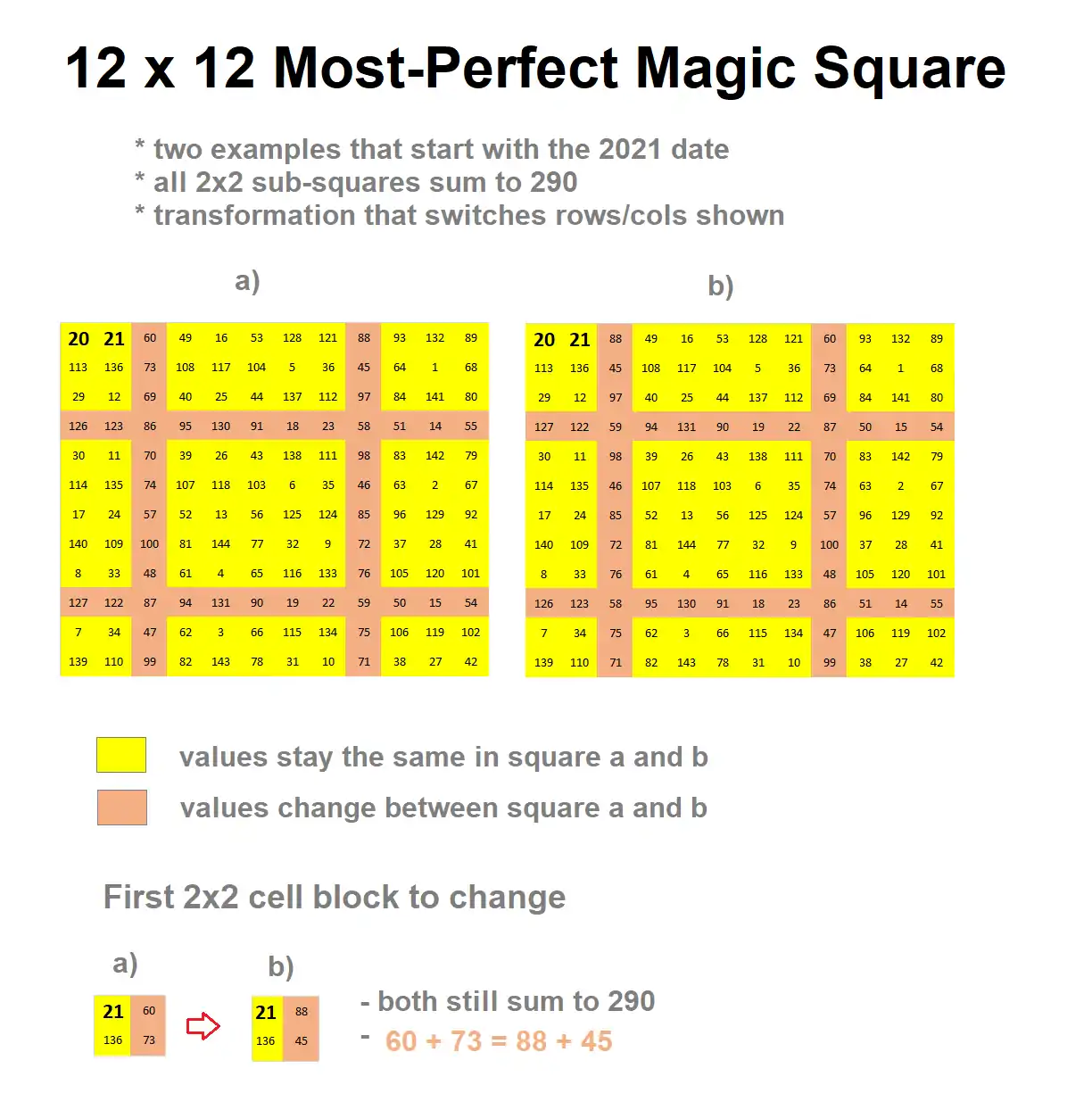
Properties
All most-perfect magic squares are panmagic squares.
Apart from the trivial case of the first order square, most-perfect magic squares are all of order 4n. In their book, Kathleen Ollerenshaw and David S. Brée give a method of construction and enumeration of all most-perfect magic squares. They also show that there is a one-to-one correspondence between reversible squares and most-perfect magic squares.
The number of essentially different most-perfect magic squares of order 4n for n = 1, 2, ... form the sequence:
- 48, 368640, 22295347200, 932242784256000, 144982397807493120000, ... (sequence A051235 in the OEIS).
For example, there are about 2.7 × 1044 essentially different most-perfect magic squares of order 36.
All order four panmagic squares are most-perfect magic squares. The second property implies that each pair of the integers with the same background color in the 4×4 square below have the same sum, and hence any 2 such pairs sum to the magic constant.
| 7 | 12 | 1 | 14 |
| 2 | 13 | 8 | 11 |
| 16 | 3 | 10 | 5 |
| 9 | 6 | 15 | 4 |
Physical properties
The image below shows areas completely surrounded by larger numbers with a blue background. A water retention topographical model is one example of the physical properties of magic squares. The water retention model progressed from the specific case of the magic square to a more generalized system of random levels. A quite interesting counter-intuitive finding that a random two-level system will retain more water than a random three-level system when the size of the square is greater than 51 X 51 was discovered. This was reported in the Physical Review Letters in 2012 and referenced in the Nature article in 2018.[3][4]
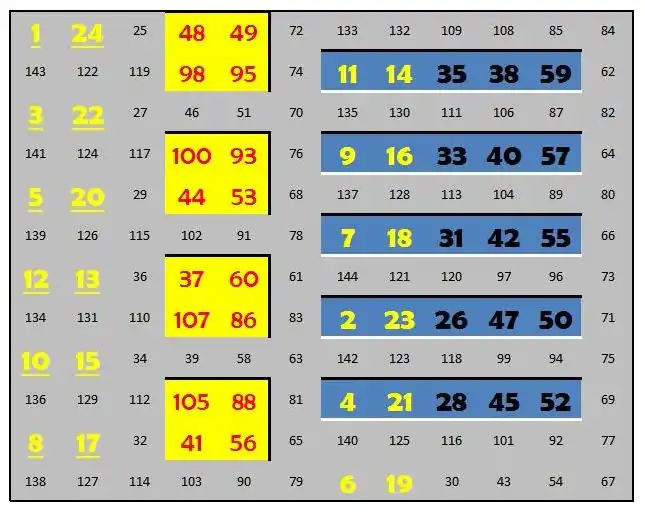
Generalizations
Most-perfect magic cubes
There are 108 of these 2x2 subsquares that have the same sum for the 4x4x4 most-perfect cube.[5]
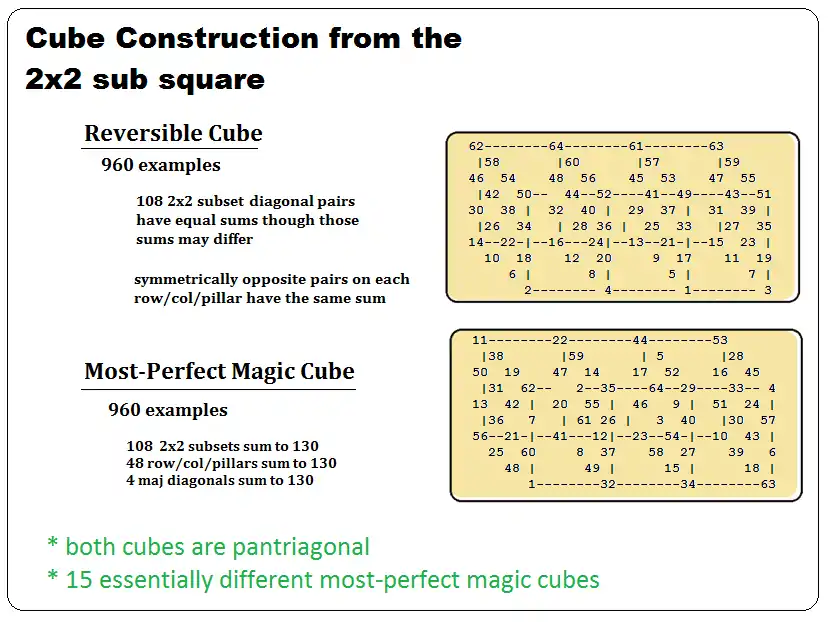
See also
- Sriramachakra
- Pandiagonal magic square (diabolic square)
Notes
- F1 Compiler http://www.f1compiler.com/samples/Most%20Perfect%20Magic%20Square%208x8.f1.html
- http://budshaw.ca/Reversible.html Reversible Squares, S. Harry White, 2014
- Knecht, Craig; Walter Trump; Daniel ben-Avraham; Robert M. Ziff (2012). "Retention capacity of random surfaces". Physical Review Letters. 108 (4): 045703. arXiv:1110.6166. Bibcode:2012PhRvL.108d5703K. doi:10.1103/PhysRevLett.108.045703. PMID 22400865.
- https://oeis.org/A201126 OEIS A201126
- https://oeis.org/A270205 OEIS A270205
References
- Kathleen Ollerenshaw, David S. Brée: Most-perfect Pandiagonal Magic Squares: Their Construction and Enumeration, Southend-on-Sea : Institute of Mathematics and its Applications, 1998, 186 pages, ISBN 0-905091-06-X
- T.V.Padmakumar, Number Theory and Magic Squares, Sura books, India, 2008, 128 pages, ISBN 978-81-8449-321-4
External links
- T. V. Padmakumar, Strongly magic squares
- Harvey Heinz: Most-perfect Magic Squares
- OEIS sequence A051235 (Number of essentially different most-perfect pandiagonal magic squares of order 4n)
- OEIS sequence A270205 (Number of 2 X 2 planar subsets in an n X n X n cube)
- OEIS sequence A275359 (Maximum incarceration of numbers in an n X n X n number cubes with full incarceration volumes) -- Incarcetration
- B. Burger, J. S. Andrade Jr., H. J. Herrmann (2018). "A comparison of hydrological and topological watersheds". Scientific Reports. 8 (1): 10586. Bibcode:2018NatSR...810586B. doi:10.1038/s41598-018-28470-2. PMC 6043487. PMID 30002379.CS1 maint: multiple names: authors list (link)
- Pattern overlay of every other cell being surrounded by four larger cell values introduced
